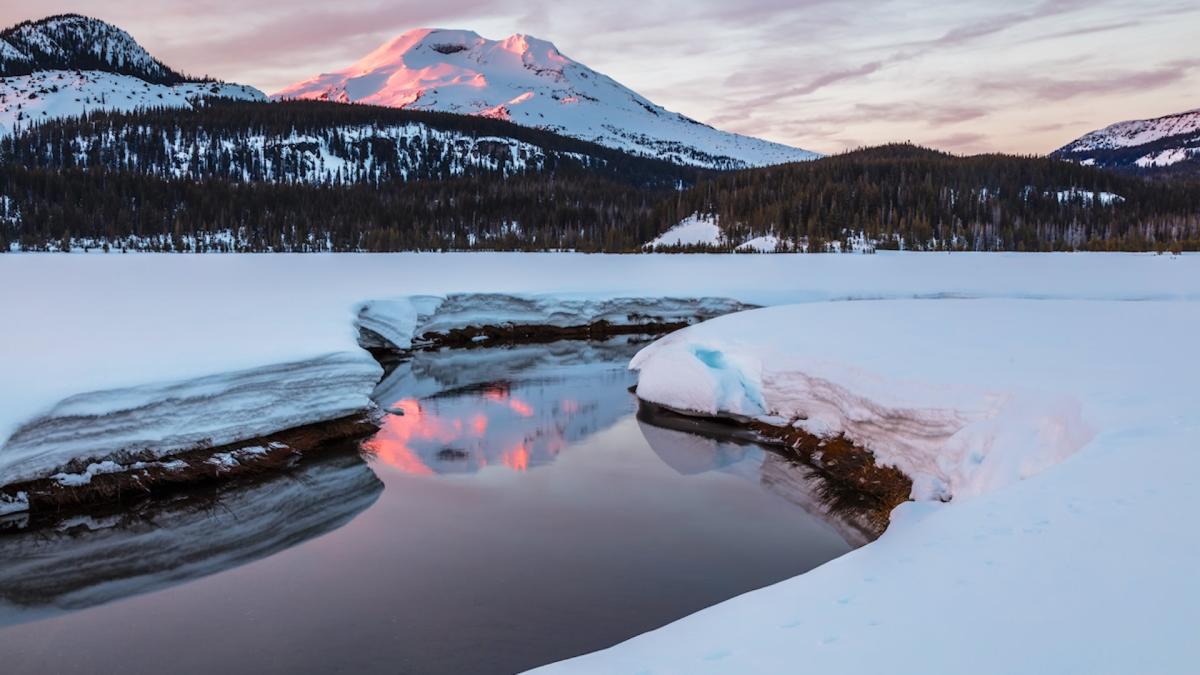
Scientists from the University of Oregon and other research teams have found a massive underground aquifer hidden beneath the central Oregon Cascades — way bigger than anyone expected.
Using deep geological mapping, they discovered it holds at least 81 cubic kilometers of water. That’s almost three times the size of Lake Mead and more than half the volume of Lake Tahoe, according to ScienceDaily.
Described as “a continental-size lake stored in the rocks at the top of the mountains, like a big water tower,” by Leif Karlstrom, the earth scientist who led the study, this finding reshapes how we understand water resources in the western United States.
Advertisement
Advertisement
The research, published in the Proceedings of the National Academy of Sciences, points to the Cascade Range possibly holding the biggest volcanic aquifer system on the planet.
The timing couldn’t have been more important as rising global temperatures are shrinking snowpacks and making droughts more frequent across the western U.S., putting pressure on both the environment and the people who rely on these water sources. The McKenzie River, which provides drinking water to Eugene, Oregon, starts from mountain springs in the Cascade Range.
Scientists found an underground aquifer beneath the central Oregon Cascades, holding at least 81 cubic kilometers of water. It’s a big discovery, but researchers still need to figure out how exactly this aquifer connects to the springs that feed the McKenzie River, which plays a key role in supporting both local communities and agriculture in the region.
Watch now: How bad is a gas stove for your home’s indoor air quality?
Even though the aquifer’s size seems promising, scientists aren’t ready to celebrate just yet.
Advertisement
Advertisement
“Its longevity and resilience to change is set by the availability of recharging waters,” Karlstrom said. Since the aquifer depends a lot on snowmelt, shrinking snowpacks in the coming years could put its stability at risk. Places like California are dealing with similar problems, where managing groundwater during long droughts has shown just how critical it is to have sustainable water systems in place.
There’s another layer to this discovery too — it sheds light on volcanic risks. When water mixes with magma it can trigger stronger eruptions, so scientists are keeping a close watch on the area.
|
How often do you worry about the quality of your drinking water? Click your choice to see results and speak your mind. |
But this huge aquifer is a reminder that there’s still so much we don’t know about the natural systems we depend on, especially with the climate changing. This could make a real difference for people living in places like Eugene that rely on water from the Cascades. Figuring out how this underground water connects to rivers and springs might help with future water planning, especially as the climate keeps changing.
“This region has been handed a geological gift, but we really are only beginning to understand it,” said Gordon Grant, who is a geologist with the U.S. Forest Service and co-author of the study.
Join our free newsletter for good news and useful tips, and don’t miss this cool list of easy ways to help yourself while helping the planet.
EMEA Tribune is not involved in this news article, it is taken from our partners and or from the News Agencies. Copyright and Credit go to the News Agencies, email news@emeatribune.com Follow our WhatsApp verified Channel




